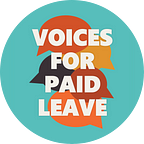Choosing the Daddy Track: Being There is the Battle
One week.
That is how much paternity leave my father’s company offered him when my parents were preparing to welcome me into the world. He then cobbled together another week of vacation time so he could bond with me as a newborn and help my mom. My mom worked at the same company and had access to six weeks of maternity leave and one week of vacation time, which she used to extend her maternity leave. It is astounding to realize that they were among the very lucky ones because then — like today — access to paid leave was rare.
Despite those challenges, my father was determined to be as involved as he could. My parents often recount how my dad ensured our house was stocked with a plethora of baby supplies, groceries and anything else my mom could possibly need while he was at work. He also made sure there was always a family member, usually my grandmother, on deck to take my mother to my well-baby visits if he was not able to work from home that day to attend himself. At the end of the day though, it all mostly fell on my mom (sound familiar?) and it took longer for my father to bond with me, since he was spending more time away. Being a parent to a newborn is hard. Even when you have done it before. Even when you have access to other supports that make the transition smoother.
Access to paid leave is one possible solution to addressing care challenges, but changing how we view who takes leave and gives care within our culture is just as important. In general, women are — and are seen — as the primary caregivers for ill family members, but we should not forget that more than 40 percent of family caregivers are men. Changing the way we think about who paid family and medical leave is for is paramount to achieving gender equity when it comes to childrearing and caregiving. Men want to be there not only when a new child is born but also to care for a parent battling a serious illness, or for their spouse’s surgery, or for an adult child with a chronic condition or for any other curveball life throws at them. Any federal paid leave program must be comprehensive to allow working people to address the full range of caregiving responsibilities. Fathers are caregivers who want and need to be there for their families, like my dad did and still does.
My family was blessed to have access to paid leave and other workplace supports, but paid paternity leave and paid family leave in general are still seriously lacking for the vast majority of America’s families. In fact, just 14 percent of workers have paid family leave through their jobs; only 9 percent of workers are at worksites where all employees have access to paid paternity leave. Workplaces still do not reflect working people’s need for flexibility and access to paid family leave for the important moments in life — moments that should not mean having to miss a paycheck or even losing a job.
And even though paid parental leave is essential for parents as they get to know their children, paid parental leave makes up less than one-quarter of the serious family and medical leave workers take each year. Children grow up and, in many cases, end up needing to provide care to their parents.
As the circle of life goes, one day my father may need care too. Right now, whether I would be able to provide that care depends on residing in one of the small number of states that have created paid family and medical leave insurance programs or having an employer that offers me paid leave. I hope I will not have to struggle to care for him as he ages, as he struggled to care for me when I entered into the world.
Earlier this year, members of Congress reintroduced the Family And Medical Insurance Leave (FAMILY) Act, which would create a nationwide paid family and medical leave program in the United States. The FAMILY Act would help parents bond with a new child, help sons and daughters care for a seriously ill or injured parent, and help everyone deal with their own serious health issues. It would provide 12 weeks of paid leave funded through small, shared payroll contributions. This program would allow families and individuals to be there when they are needed most without compromising their financial security. That peace of mind is priceless.
Happy Father’s Day to all the fathers and father figures out there doing the work. You are appreciated and essential today and every day.
*For more information on why fathers need paid family and medical leave, check out this fact sheet.
